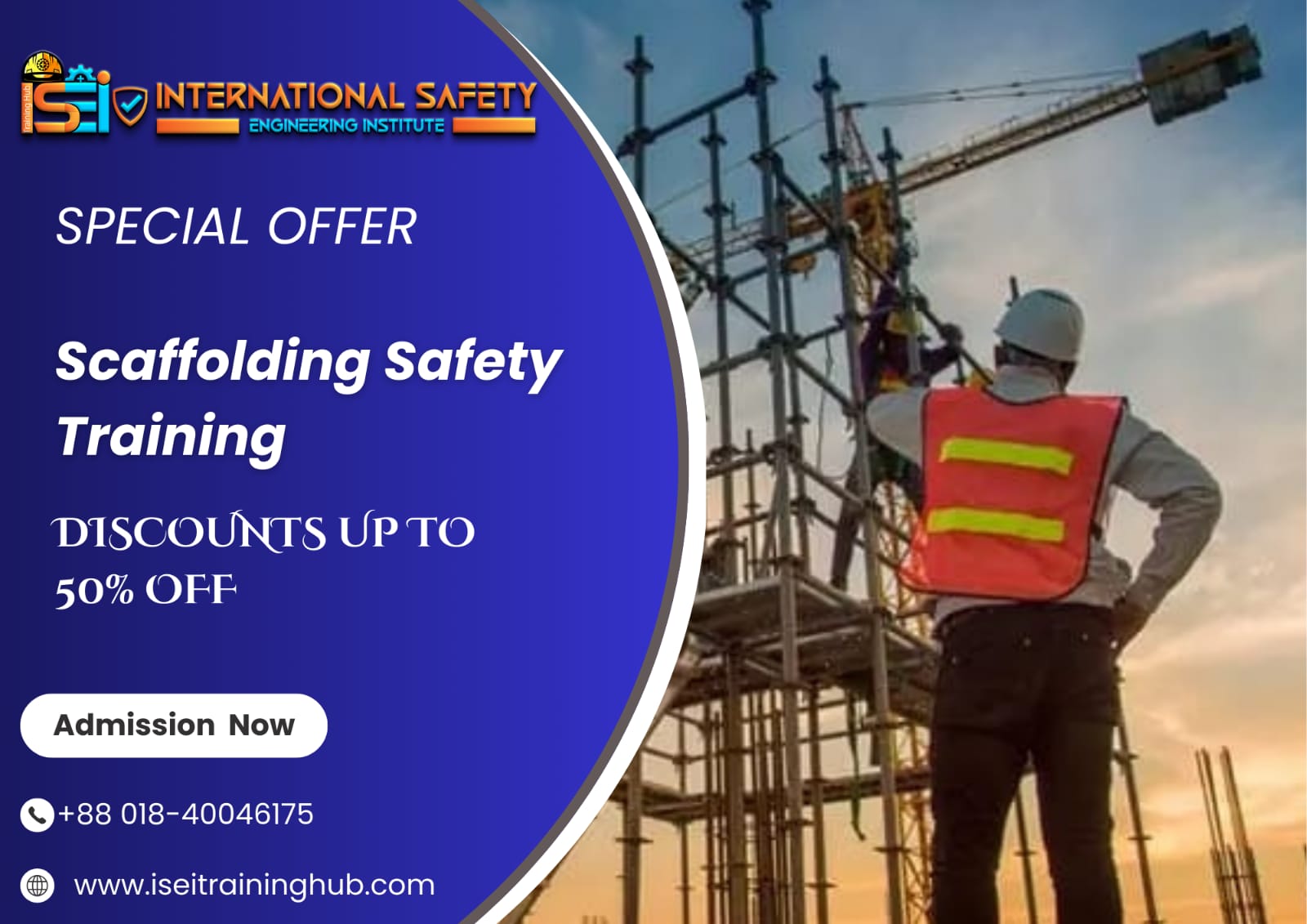Who Should Attend
- Scaffolders and riggers
- Supervisors and construction managers
- Safety officers and coordinators
- Workers involved in scaffolding erection or inspection
- Anyone working in environments where scaffolding is used
Course Duration
3-4 Days (depending on the level of practical training required)
Course Objectives
- Understand the types of scaffolding and their proper uses.
- Learn how to safely erect, use, and dismantle scaffolding systems.
- Identify common scaffolding hazards and implement controls to mitigate risks.
- Perform routine inspections of scaffolds to ensure safety and stability.
- Ensure compliance with OSHA and other relevant safety regulations.
Course Outline
- Introduction to Scaffolding Safety: Importance of scaffolding safety in preventing accidents and legal/regulatory requirements (OSHA, ANSI, etc.).
- Types of Scaffolding Systems: Supported scaffolding, suspended scaffolding, mobile scaffolding, aerial lifts, and platforms.
- Hazards Associated with Scaffolding: Fall hazards, scaffold collapse, electrical hazards, falling objects, and scaffold access.
- Scaffolding Erection and Dismantling: Proper procedures, ensuring stability, securing components and platforms.
- Personal Protective Equipment (PPE): Types of PPE required (harnesses, helmets, gloves), fall protection systems.
- Scaffold Inspections and Maintenance: Daily inspections, identifying unsafe components, reporting deficiencies.
- Safe Use of Scaffolding: Correct load capacities, preventing overloading, ensuring proper access.
- Emergency Response and Rescue Procedures: Responding to accidents, first aid, and evacuation procedures.
- Case Studies and Practical Exercises: Real-world case studies and practical demonstrations of scaffold inspection and erection.
Training Methodology
- Interactive presentations and discussions
- Hands-on scaffold inspection and assembly exercises
- Group discussions on safety measures and risk management
- Case studies and real-life scenarios
- Quizzes and practical assessments
Certification
Participants who successfully complete the course and pass the assessment will receive a Scaffolding Safety Training Certificate, valid for two years.
Key Benefits
- Increased awareness of scaffolding-related hazards and risks
- Enhanced ability to prevent scaffold accidents and injuries
- Better compliance with OSHA and industry regulations
- Improved teamwork and communication in scaffold safety management
- Prolonged lifespan and safety of scaffolding systems
Course Fee
To be determined (customizable based on group size and training location).
For registration or more details, contact us:
- Email: [Your Email Address]
- Phone: [Your Phone Number]
- Website: [Your Website URL]
